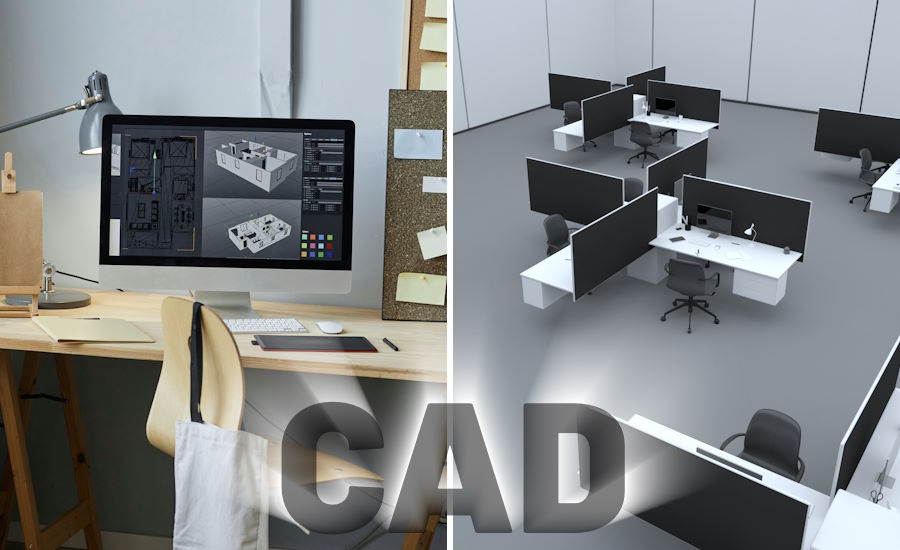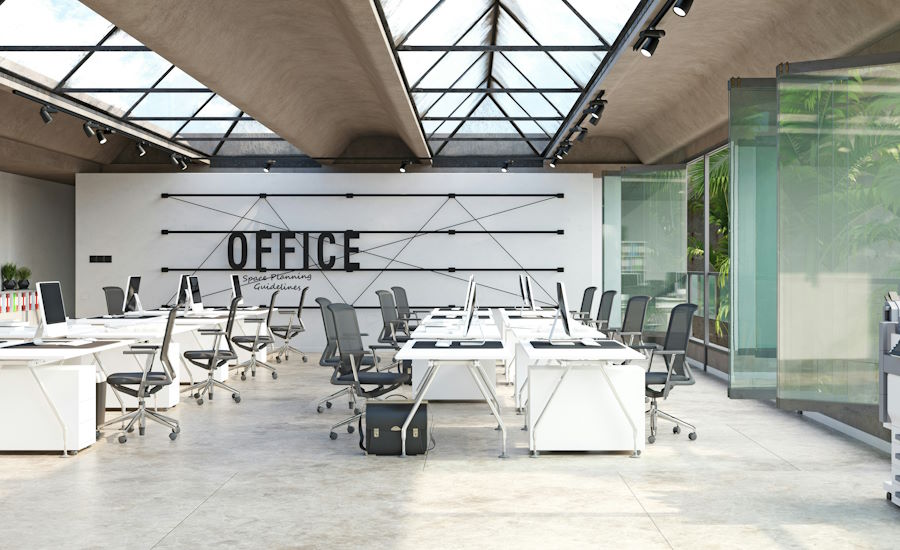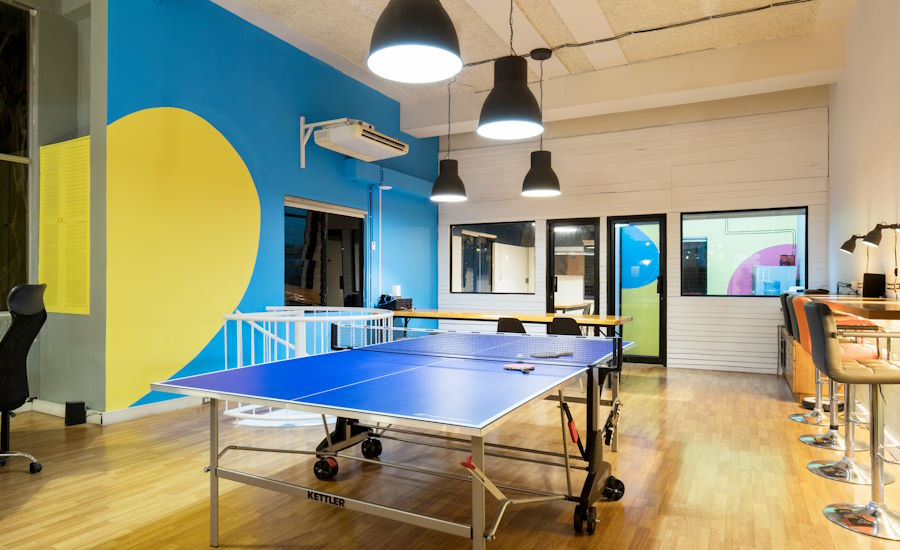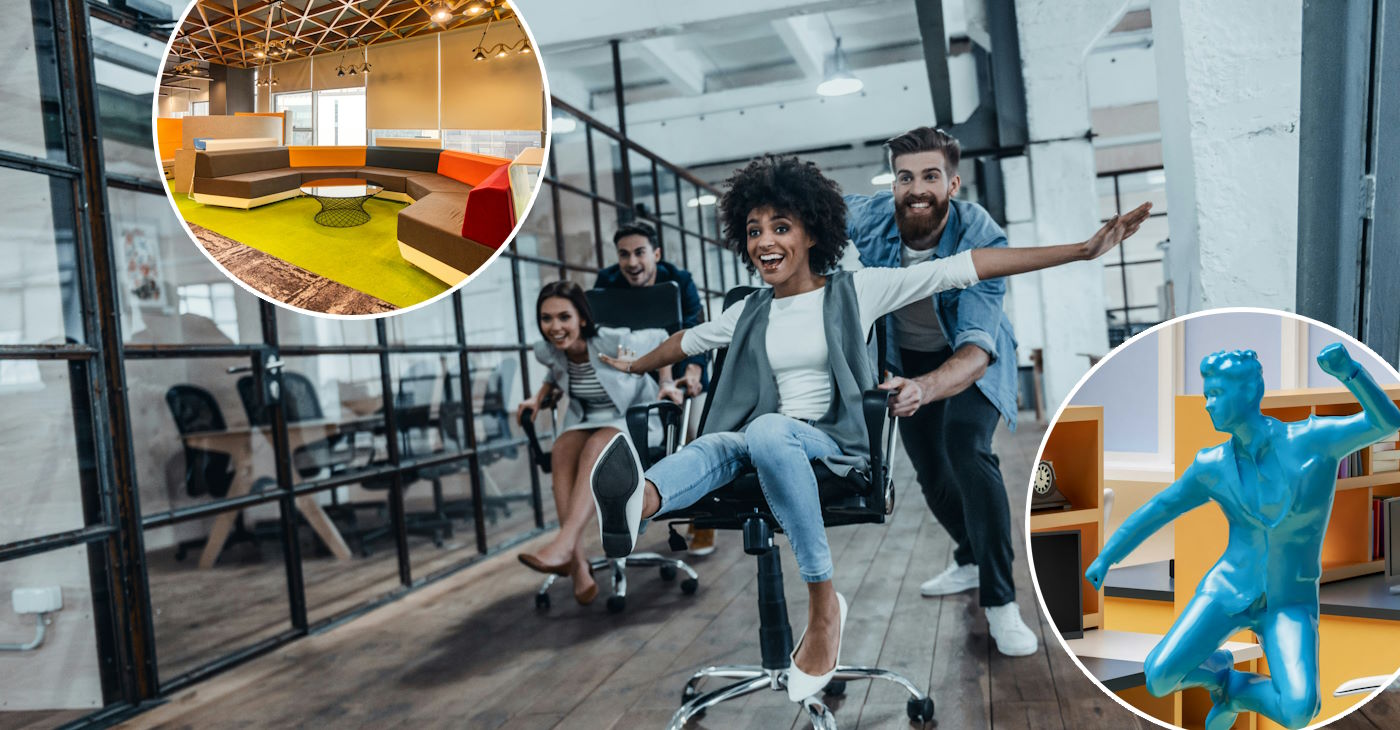Office space planning is the systematic process of designing and organizing an office layout to optimize functionality, efficiency, and comfort for employees and visitors. It encompasses the arrangement of workspaces, meeting rooms, communal areas, and circulation paths within an office environment, all tailored to meet the unique needs of a business. A well-planned office space supports productivity, enhances employee well-being, and promotes a company’s brand identity through its physical environment. With the increasing focus on sustainability, health, and technology integration, office space planning has evolved into a critical aspect of workplace management that balances aesthetics with practicality. In this thorough article we’ll discuss important guidelines, tips and examples in office space planning, come along and enrich your in this subject.
How does office space planning help a company?
A strategically planned office space offers numerous benefits that extend beyond mere aesthetics and design. Below you’ll find some important highlights as to how this may, or rather will, help a company achieve better results:
Enhanced productivity
A well-organized workspace ensures that employees have easy access to the tools, resources, and colleagues they need, reducing wasted time and effort. For instance, placing departments that frequently collaborate near each other minimizes time lost in transit and makes quicker decision-making.
Improved employee well-being
Incorporating elements such as natural light, ergonomic furniture, and designated break areas within the office design can significantly boost employee satisfaction and reduce health issues. Studies have shown that such elements can lead to lower absenteeism rates and higher employee retention.
Optimized space utilization
Effective space planning ensures that every square foot of the office is utilized efficiently. This is particularly crucial in urban areas where real estate costs are high. By optimizing space, businesses can avoid unnecessary expenditure on larger premises and can make better use of the space they have.
Flexibility and future-proofing
Modern office space planning often incorporates flexible layouts that can adapt to the changing needs of the business. This might include movable walls, modular furniture, or multi-purpose spaces that can be reconfigured as required. This adaptability is essential for companies that anticipate growth or changes in work styles.
Brand identity and corporate culture
The physical office space can serve as a powerful reflection of a company’s brand and values. For example, an open-plan office with collaborative spaces might reflect a culture of transparency and innovation. Integrating brand colors, logos, and mission statements within the design can reinforce company identity and make a strong impression on clients and visitors.

How-to – Plan out an office space in 5 simple steps
Planning an office space involves a methodical approach to ensure that the final layout meets the needs of all stakeholders. Here are five essential steps to guide the process:
1. Needs assessment
The first step involves understanding the specific requirements of the business. This includes evaluating the number of employees, the types of work they do, and any special needs such as collaboration spaces or private offices. Engaging employees in this process through surveys or interviews can provide valuable insights into their preferences and pain points.
2. Space analysis
Once the needs are clear, the next step is to assess the physical space available. This includes measuring the floor plan, identifying structural elements (like columns or load-bearing walls), and considering aspects like natural light, ventilation, and acoustics. A thorough space analysis helps in understanding the constraints and possibilities of the office space.
3. Layout design
With the information from the needs assessment and space analysis, the next step is to design the layout. This involves placing workstations, meeting rooms, communal areas, and circulation paths in a way that maximizes efficiency and comfort. The design should also consider future growth and incorporate flexibility where possible.
4. Selection of furniture and materials
The choice of furniture and materials plays a crucial role in the functionality and aesthetics of the office. Ergonomic furniture, durable materials, and energy-efficient lighting should be prioritized. Additionally, selecting materials that contribute to good acoustics and air quality can enhance the overall working environment.
5. Implementation and review
The final step is to implement the design, which involves coordinating with contractors, purchasing furniture, and overseeing the construction or renovation work. After the office space is set up, it’s important to conduct a review to ensure that the design meets the intended goals. Gathering feedback from employees can help identify any adjustments that may be needed.
What benefits does interior glass, glass walls, and glass doors have in offices?
Interior glass elements, such as glass walls and doors, are increasingly popular in modern office design due to their numerous advantages. Take a look below at how they contribute to effective office space planning:
Natural light maximization
Glass walls and doors allow natural light to permeate deeper into the office, reducing the reliance on artificial lighting and creating a brighter, more inviting work environment. Exposure to natural light has been linked to improved mood, energy levels, and productivity among employees.
Visual transparency and openness
Glass partitions create a sense of openness and transparency without compromising privacy. This is particularly useful in open-plan offices where it’s important to maintain a balance between collaboration and concentration. Frosted or tinted glass can provide privacy while still allowing light to pass through.
Acoustic management
Modern office glass solutions often include acoustic treatments that help manage sound within the office. This is crucial in maintaining a quiet environment conducive to focused work, especially in open-plan layouts where noise can be a significant issue.
Aesthetic appeal
Glass adds a sleek, modern aesthetic to office spaces, contributing to a professional and polished look. It can also be customized with company logos, patterns, or colors to reinforce brand identity.
Space efficiency
Glass walls are thinner than traditional walls, which means they take up less space, allowing for more efficient use of the floor area. Additionally, movable glass partitions can offer flexibility, enabling the reconfiguration of spaces as needed without extensive renovations.
We can only imagine, but with all of these advantages mentioned, you may have been persuaded into considering interior glass for the company office place. Then make a visit to Gothes.se, there you’ll find a wide range of products in the field of glass walls and doors, for you take the workplace and employees into the next level.

What tools are used in planning the layout of the office?
The planning of an office layout involves various tools, ranging from traditional methods to advanced digital solutions. Here are some key tools commonly used in office space planning:
CAD software (Computer-Aided Design)
CAD software, such as AutoCAD, is a staple in the design industry. It allows planners to create detailed floor plans, 3D models, and simulations of office layouts. These tools are invaluable for visualizing how different elements will fit together and for making precise measurements.
BIM (Building Information Modeling)
BIM is an advanced tool that integrates data from different disciplines (architecture, engineering, construction) into a single model. This allows for more comprehensive planning, including considerations for structural integrity, electrical systems, and HVAC. BIM is particularly useful for large-scale office projects or renovations.
Space management software
These tools help track and optimize the use of office space over time. They can monitor how different areas of the office are being used and provide data-driven insights to improve efficiency. Examples include Archibus and Planon.
VR and AR (Virtual Reality and Augmented Reality)
VR and AR technologies are becoming increasingly popular in office design. They allow stakeholders to virtually walk through a proposed office layout and experience it before any physical changes are made. This can be particularly useful for identifying potential issues or improvements early in the design process.
Collaboration tools
Tools like Trello, Asana, or Slack are essential for managing the planning process, particularly when multiple stakeholders are involved. These platforms facilitate communication, task management, and document sharing, ensuring that the project stays on track.

Guidelines and tips for planning an office space layout
When planning an layout of the office space, adhering to certain guidelines and tips can help create a space that is both functional and appealing. Key considerations include:
Prioritize functionality over aesthetics
While aesthetics are important, the primary focus should be on creating a space that supports the work being done. Ensure that the layout facilitates the flow of work and meets the needs of employees.
Incorporate flexibility
Modern workplaces need to adapt to changing needs, whether due to company growth, evolving work styles, or technological advancements. Design spaces that can be easily reconfigured, such as modular furniture or movable walls.
Consider acoustics
Noise can be a major distraction in an office. Use materials and layouts that minimize noise, such as acoustic panels, carpets, and strategic placement of workstations.
Maximize natural light
Whenever possible, position workstations near windows to take advantage of natural light. This not only reduces energy costs but also improves employee well-being.
Create a balance between private and collaborative spaces
Employees need a mix of quiet areas for focused work and communal areas for collaboration. Ensure that the layout provides both, and consider using glass partitions to balance openness with privacy.
Ensure accessibility and inclusivity
The office layout should be accessible to all employees, including those with disabilities. This includes wide corridors, accessible restrooms, and adjustable workstations.
Promote sustainability
Incorporate sustainable practices into the office design, such as using energy-efficient lighting, recycled materials, and indoor plants to improve air quality. Sustainable design is not only good for the environment but can also reduce operating costs.
Plan for technology integration
Modern offices require robust technological infrastructure. Ensure that the layout accommodates the necessary wiring, outlets, and network connections. Consider future-proofing the design by planning for the integration of IoT devices and smart office systems.

Example of an effective workspace
An example of an effective workplace is the open-plan office with dedicated zones for different activities. This design might include:
Workstations
Arranged in clusters to facilitate collaboration, with each station equipped with ergonomic furniture and ample storage.
Meeting rooms
Enclosed glass-walled rooms that provide privacy while maintaining visual connection with the rest of the office.
Breakout areas
Casual seating areas for informal meetings or relaxation, often located near natural light sources and equipped with comfortable furniture.
Focus rooms
Small, soundproof rooms designed for tasks that require deep concentration.
Technology hub
A central area with shared resources like printers, charging stations, and technical support services.
Green spaces
Incorporating plants and natural elements to improve air quality and create a calming atmosphere.
This layout supports a variety of work styles and needs, offering flexibility and promoting a positive work environment.

How to create the perfect office space?
Creating the perfect workspace involves a combination of thoughtful design, attention to detail, and consideration of employee needs. Here’s how:
Understand the needs of the workforce
Conduct surveys or interviews to understand what employees need to be productive and comfortable. Consider different work styles and preferences, such as the need for quiet spaces versus collaborative areas.
Incorporate ergonomic principles
Choose furniture and equipment that support good posture and reduce the risk of injury. Adjustable desks, ergonomic chairs, and proper lighting are essential.
Integrate technology seamlessly
Ensure that the workspace is equipped with the latest technology, from high-speed internet to smart office systems. Technology should be easy to use and support productivity without causing distractions.
Foster a sense of community
Design communal areas that encourage social interaction and collaboration. This could include a central café-style break area or an open lounge.
Maintain flexibility
Use modular furniture, movable partitions, and multipurpose spaces to create a workspace that can adapt to changing needs.
Focus on well-being
Incorporate elements that promote well-being, such as access to natural light, air quality improvements, and spaces for relaxation or physical activity.
Reflect company culture
The design of the workspace should align with the company’s values and culture. This can be achieved through branding elements, color schemes, and the overall layout.
Plan for sustainability
Use eco-friendly materials, energy-efficient systems, and incorporate greenery to create a sustainable workspace that reduces environmental impact.
When did planning an office space become so popular?
The concept of office space planning gained significant traction in the late 20th century as businesses began to recognize the impact of physical work environments on productivity and employee satisfaction. The open-plan office, popularized in the 1960s and 1970s, marked a major shift away from traditional cubicles and private offices, promoting collaboration and communication.
However, it wasn’t until the late 1990s and early 2000s, with the rise of the tech industry and startups, that flexible, employee-centric office design became a mainstream trend. Companies like Google and Apple led the way in creating innovative workspaces that emphasized creativity, collaboration, and employee well-being.
In recent years, the focus on sustainability, health, and technology has further evolved office space planning, where the above mentioned guidelines is a solid starting point. The integration of IoT devices, smart lighting, and sustainable materials reflects the growing importance of creating workspaces that are not only functional but also environmentally responsible and technologically advanced.
More about smart systems and building in our fellow article titled “The key benefits of smart buildings“.

Conclusion – Great benefits of a planned out office area
Office space planning and the guidelines to follow is a critical component of creating a productive, efficient, and comfortable work environment. By understanding the needs of the business and its employees, leveraging modern design principles, and incorporating elements like interior glass, flexible layouts, and sustainable practices, companies can create workspaces that support their goals and reflect their values. Whether for a small startup or a large corporation, effective office space planning can lead to significant benefits in terms of productivity, employee satisfaction, and overall business success.
We have done our best to cover most areas around office space planning and important guidelines to follow, in this in-depth article, but should it be that you are missing something, feel free to reach out to us. We would also like to recommend further reading in this topic by visiting the Wikipedia article regarding planning an office space.


